
by George Pavlopoulos | Jan 6, 2018 | George Pavlopoulus, Stories, You Are Grryo

The wind strikes the hillsides mercilessly and all the boats at the tiny port resemble carved pebbles. Late in the afternoon, a steep road pushes the travelers towards Chora, and as the sun sets behind the village, one can only see an outline: electricity pillars, TV antennas and a cluster of houses in front of the orange sky. It is a settlement stretching oblongly on the top of the island, resembling dice bestrewed after the only game played under that sky once upon a time. Hills swallowing one another wrapped with dry stacks – and down below, the sea.
A stripe of barren land amidst the sea: this is Anafi. A dozen Saints supervise the island from their churches, scattered guardhouses made by whitewash with a lonely window to the Aegean Sea. In the taverns of Chora, which in fact are just homes with welcoming courtyards, the talk of the locals always leads to some Saint who helped them in times of need. A woman is narrating how she survived while swimming: behind the high waves she saw the church of Agioi Anargiroi. If she could escape death that day, she promised to celebrate a liturgy. Tonight, she is narrating that story again, with her hands crossed tight upon her chest.

All those locals staring at the horizon narrate past stories about the waves and simultaneously observe the travelers. The elderly women, dressed in black, banish their mourning by looking at the linen clothes of the vacationers; their outfits betray middle-class salaries and a complicated life. All you need to say is “hello” in order to make the local heads turn the other way, and then one is free to cross the narrow alleys without being observed anymore. This word seems more than enough to eradicate the label of Stranger, in the exact same way the smoke of the slow boat that carried the same Stranger to Anafi is vanishing: like a doctrine that dies.
*
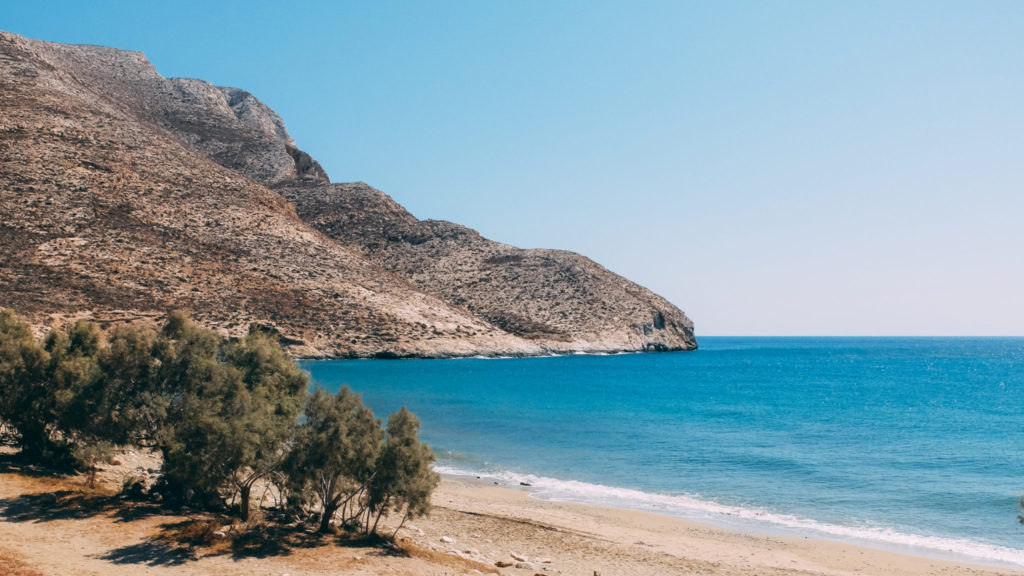
It doesn’t take that much time to get used to that settlement on the top of the rock and the initial indulgence soon transforms to insouciance. It is liberating to climb the stairs between walls that do not oppress you and at the same time act like a shelter from the howling wind. Up here, the trade is still in its archaic version and the feeling of being broke or petty is not a misfortune but a chance to gain access to whatever remains from life if you subtract all the norms: the sea, the soil and the bushes, with their peppery scent, stand there like an unripened summer.
At Klisidi, a broad beach full of tamarisk trees, an occasional crowd takes a breather next to the stormy sea. The bodies that got shaped through gyms and weight control prefer to lay down complacently ashore, their feet digging holes in the sand. All this life of maintenance and preservation has dried the sense of danger within them and the only ones swimming are the middle-aged, faces that have no illusions of perfection to lose. The desire to exist prevails against the desire to lessen the risk.
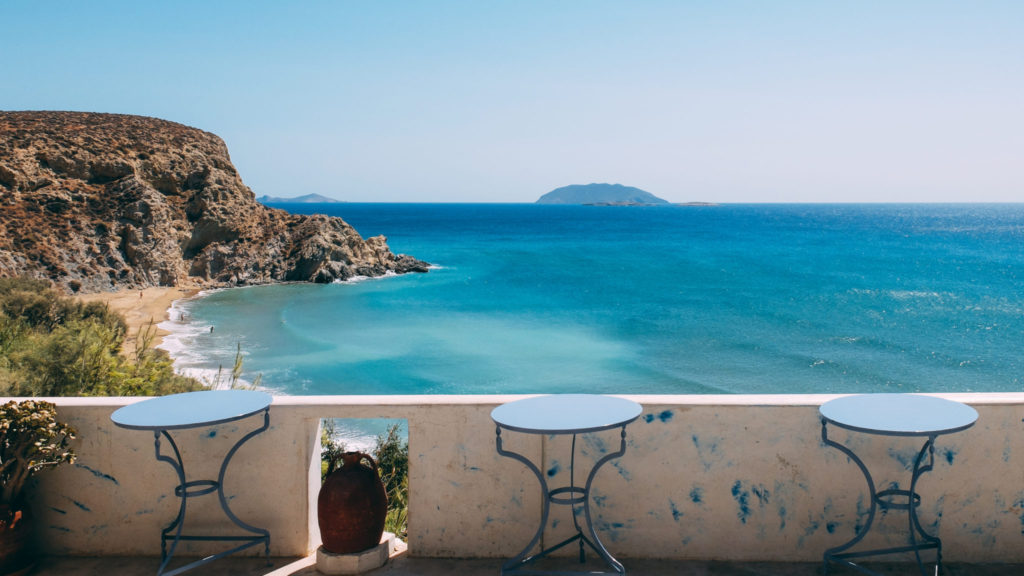
By contrast to the pretentious Santorini, the tacky trend of the sun-bed is non-existent here. One brings tomatoes, cheese and a bottle of water and tries to settle in beneath the tamarisk trees. You then have all the time in the world to see the sun following its orbit, to imagine the waves crashing at the Monolith, to observe the ants running in the hot sand, and to feel grateful for the breeze that visits the beach every now and then and cools down the salted skin. The rough sea bursts on the peaceful landscape, exactly as a man bursts when smothering from injustice. But, alas, you must know how to endure this prehuman rage: you don’t need berms against the sea.
*

The curves of the white houses imitate the curves of the landscape. Those suspicious roofs have seen people migrating to distant cities and never return. The roofs know that a hundred and fifty heads will sleep there during the winter, people who won’t have the courage to leave the house when the wind will howl without mercy. They will expect a last dosage of hope from the boat that appears only twice a week, like a lost frame from a Visconti movie. It is the resurgence of the moral that keeps them alive though, not the supplies that the boat unloads.

All those hills that the old bus is daily traversing on a slow speed isolate Chora from the rest of the island. The rattlesnake roads seem to push away the Monolith, which stands all alone on the edge, with a monastery on top. One can gaze from the butte two islands with vivid names, Pachia and Makra, both of them always being the first to taste the weather’s mood. The hikers on the way to the Monolith look at each other with some sort of complicity. None is revealing his secret, none succumbs to the temptation of sharing his life with a stranger he met on the way to endlessness.
Like dots on an arid landscape, people hike towards the white rock as if they are sailing on a sea of traumas.
*
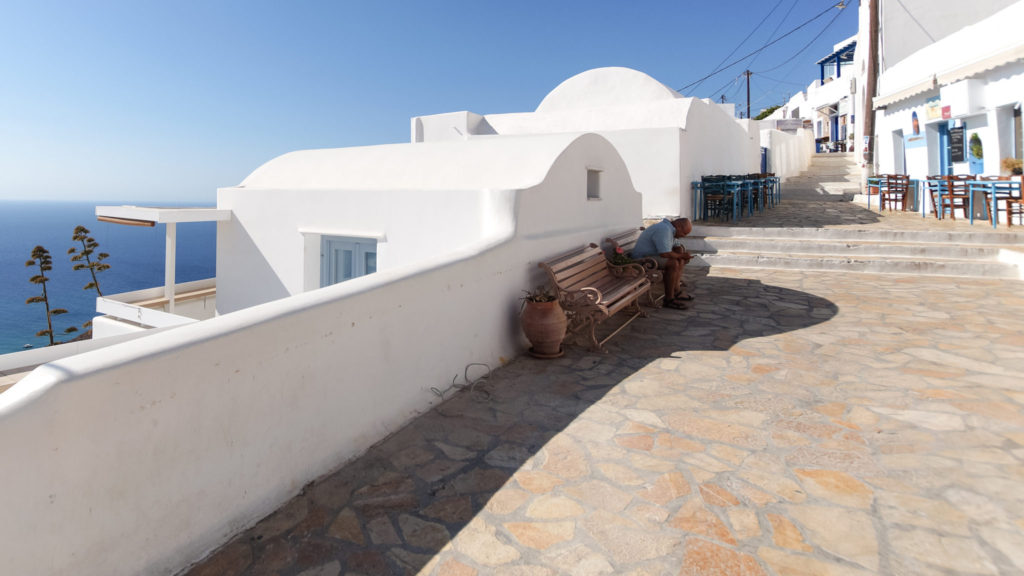
Later in the evening, the lanky girls sit on the pavement of the little square and the locals stare at their wet hair. It is a spot that the alley broadens and seems to be demarcated by the two mini-markets of the island. The men sit on the chairs of the coffeehouse and listen to the girls’ laughter for a while, before they once again sink into their talk about daily life. They talk about hunting, share thoughts about council tax, as well as ideas on how the water will reach the fields. They contemplate the future of the island’s accommodation facilities. They light cigarettes, they blow their smoke and, when the only thing left from them is the filter, they stub them out on the ashtray with fingers made of steel. They have already forgotten the girls in their summer clothes, and they are so engaged in their talk that they fail to remember a basic rule: in the ashtrays of Anafi there always rests a wet napkin, so that the ashes won’t disperse.
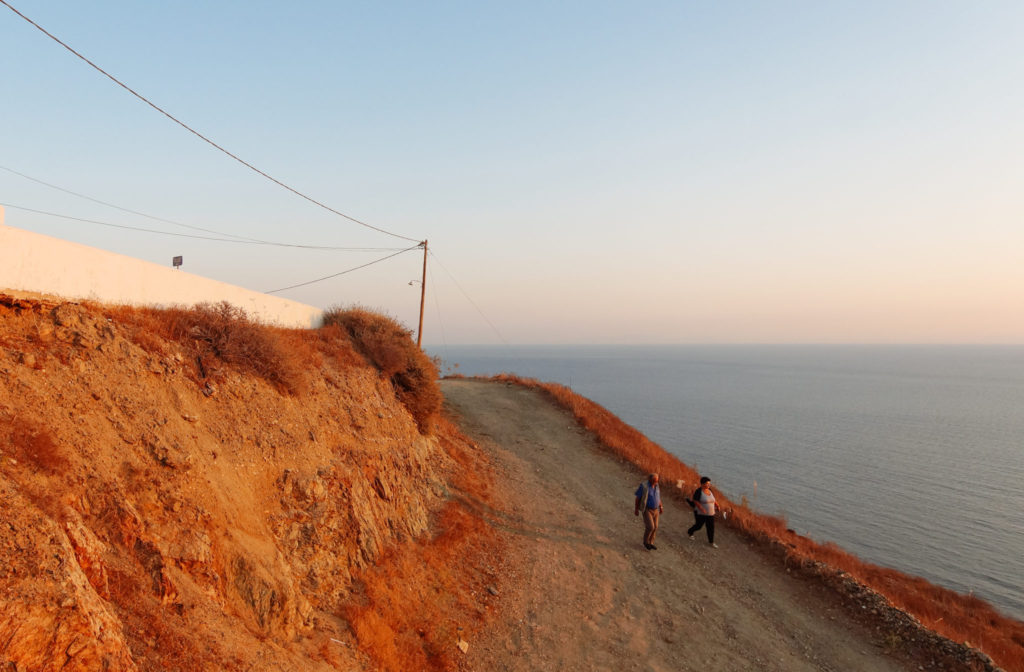
It’s not the people that let the night fall, but the square itself. The nights in Anafi have been identical for centuries: a luminous piping on the top of a rock and beneath it an unfathomable darkness. The talks seem to be recorded by a stenographer who’s using his last chalk. But humidity erases the words, and when the sun rises, no one remembers last night’s promises. This ritual is repeated continuously, without interruption, every night. Yet, the day that one embarks on the morning boat, he will see Anafi for one last time. Up there, on the top of the rock, Chora appears like a white, shaky line. It is, of course, drawn by chalk.

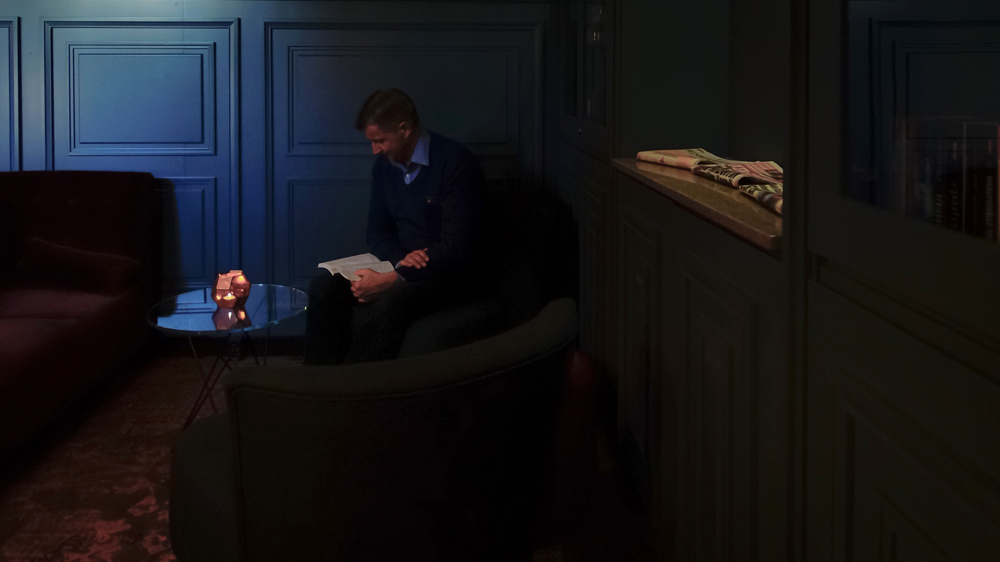
by George Pavlopoulos | Jun 23, 2017 | George Pavlopoulus, Stories, StreetPhotography, You Are Grryo
March of fears and memories. At the end of every downward road the sea appears frozen. Huge slices of ice are floating on the water like melancholic islands. Blue eerie light all day long. The wind is whipping the faces as a reminder that winter never really ends here. It’s a frozen waft that comes from somewhere far away, probably from the history of Helsinki, that cast off the despots but not the architects.

“It’s getting dark, too dark to see”
The trams, sleepy but obedient, are carrying the thickest winter coats. The seams have unraveled due to the double layer of pullovers beneath them and the eyes read the co-passengers like a book with a beginning, but without a middle or an end. Most of these thick coats are disembarking in front of Central Station, its entrance always covered by a shadow that seems amphitheatric. Doors open and close and the beggars are walking around, fishing only the bad-tempered passengers: it’s a glance of solidarity that they’re searching for, not the money in the wallet. One should spend a quarter of an hour in front of Central Station, because on that spot all the neighborhoods of Helsinki are condensing; on that spot the wrinkles on the foreheads seem like frozen railroad tracks.

“Hand in hand”
One can never really leave Central Station behind, not even when you see the buildings by Alvar Aalto and think that you’ve landed in another city. On this latitude and longitude, modern architecture resembles slices of concrete ice, which must rise above the everlasting piles of snow. The contemporary buildings are quiet in the interior: the laughter and talks of people seem to be less loud than whispers. Quite often, the voices seem to be getting distilled by the tall windows and they soon convert to light. The high heels of a woman, the keys of a guard, the crying of a baby, all that noise tends to challenge the serenity: it’s the denial to surrender in the dogmatism of walls.

“The orange balloon”
The studious visitor, the one that carries in his luggage grief but not hope, is usually jealous of the people sitting inside the cozy cafés. The windows are steamed by faces exhaling words; human snouts crouching into wide coffee pots. Aside, on tiny plates, sweets not bigger than sugar cubes present proudly themselves: they cost more than the coffee. All those underpopulated tables are becoming a cheap allegory about life up north: people diffused in a territory, trying to muzzle the weather by shutting a heavy door in its face, the same way that one is shutting his eyes in order to forget.

“Temple”
One is tripping over the threshold of the Ateneum or Kiasma museums in order to learn something that has little to do with art. In Ateneum, among sorrowful paintings hanging from black walls, a newlywed couple is shooting marital photos. A blonde woman is dragging her wedding gown on the stairs and next to her the husband is dressed in a fine suit. The photographer is chasing them on the staircase, is searching for them on the halls and is climbing on the first floor for a panoramic photo of the couple; everything is taking place among paintings that talk more about the ones that passed and less about the people left behind. An older man is staring at a painting by Albert Edelfelt, the one with the coffin of the young child on the boat; the man turns afterwards, his head towards the newlyweds. He doesn’t applaud nor disdain them: he seems to be playing a match of chess in his head, where destinies of happiness and sorrow battle against each other. If, one has to judge by his gaze, the grim version of the destiny is leading.

“Shadows are falling”
Whatever can’t be easily controlled is often getting drowned in a glass of alcohol. In the city’s market-halls, where the wooden kiosks stand next to each other selling fish, cheese and souvenirs, the locals anchor in the tables for a glass of Jaloviina. It’s a strong drink that burns the innards and fires up the talk. At the port’s market-hall, most of the people sit next to the windows and cover themselves with blankets that look like sheepskin. They stare at the little ferry that returns back from Suomenlinna, panting in the frozen sea. The glasses are getting a refill every now and then and the view of the six little islands doesn’t cause any feeling of security: the old fortress has become an outdoor museum.

“One step at a time”
The sea is everywhere. Once in a while, somewhere ashore, somebody is exiting a steaming building and runs towards the sea. He or she is half naked and is holding a towel. A dive for a couple of seconds into the cold sea and then the person runs back inside again. The less courageous prefer to stay away from the sea and they just sit on the chairs outside of the sauna. They return two, three times inside the steaming building and they repeat the ritual as if this is a ceremony of purification. It’s a siesta that has to be done with eyes wide open and the body suffers without tears.

“No surrender”
March of fears and memories. Up here, on the frozen north, the spring has been waiting for months around the corner, that overrated season of the year that always arrives triumphant and merciless. A long winter is trying to stay behind; all that silver light of the snow is the deepest version of darkness. One is visiting Helsinki in order to embark, sooner or later, in the northernmost metro of the world. The underground itineraries are never too distant, but they resemble journeys under the skin. The metro stations seem to be built on the stomach of eternal rocks and the itineraries carry on endlessly. But there comes, after all, one day that the passenger is emerging on the surface. The sun has gained some courage and appears finally in the sky while the trees are wearing their leaves again. It’s an almost violent moment, which romanticism falsely taught us to assume as peaceful. Whatever emerges then on the surface is just buried fears and memories marching on together.

“Ice reflections”
The doors of the market-halls remain open and the windows of the cafés are not steamed anymore. People avoid museums. They prefer to stand on the piers of the city, where both small and big boats are getting ready for shorter or longer journeys. A man and a woman are embarking on a vessel. They are still young and they put a basket between them. They are going to Suomenlinna in order to stretch a tablecloth on the ground and clink their wine glasses. A person they loved passed earlier this spring. They are going to the old fortress to talk, to get emotional, to laugh and to stare at the city from afar. Meanwhile, the people left behind on the piers of Helsinki are observing the scene and turn into potential painters. The shorter journeys are for the boats; the longer ones, for the people.

“A distant farewell”

“The future islands”
THE END
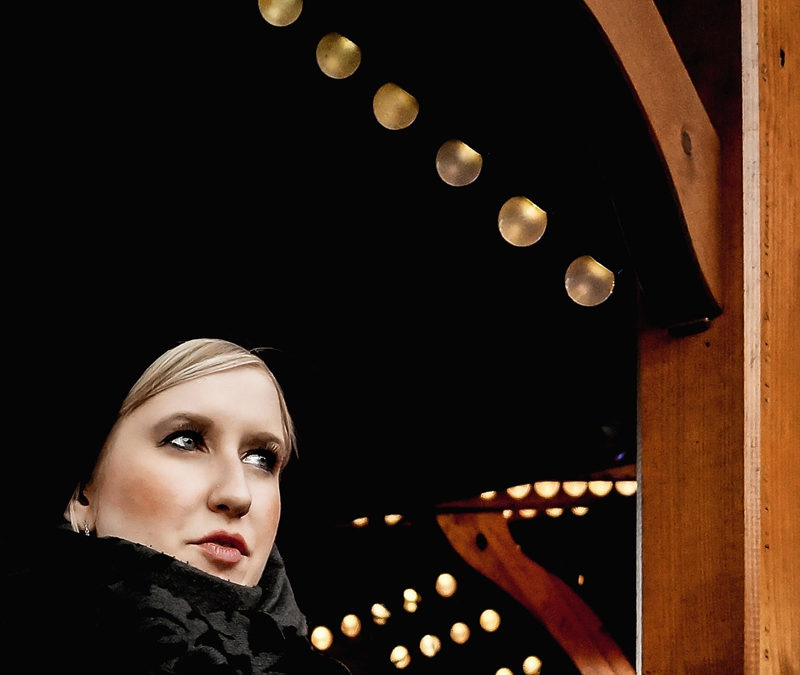
by George Pavlopoulos | Mar 7, 2017 | George Pavlopoulus, Stories, Storyteller, You Are Grryo
I grew up next to the sea and I felt that I had everything: an endless summer, the song of the cicadas, a bunch of faces that refused to grow old and the taste of watermelon under the pine trees. The sea resembled an uncultivated field, where childhood was constantly being reborn and rewarded. I don’t remember all the faces I met, but I do somehow recall sudden expressions and fleeting images: the talk of older people before sunset, the whispering lips of women, the sweating foreheads of busy men, the agony for the coming winter, as well as the promise that a triumphant summer will conquer our lives again.
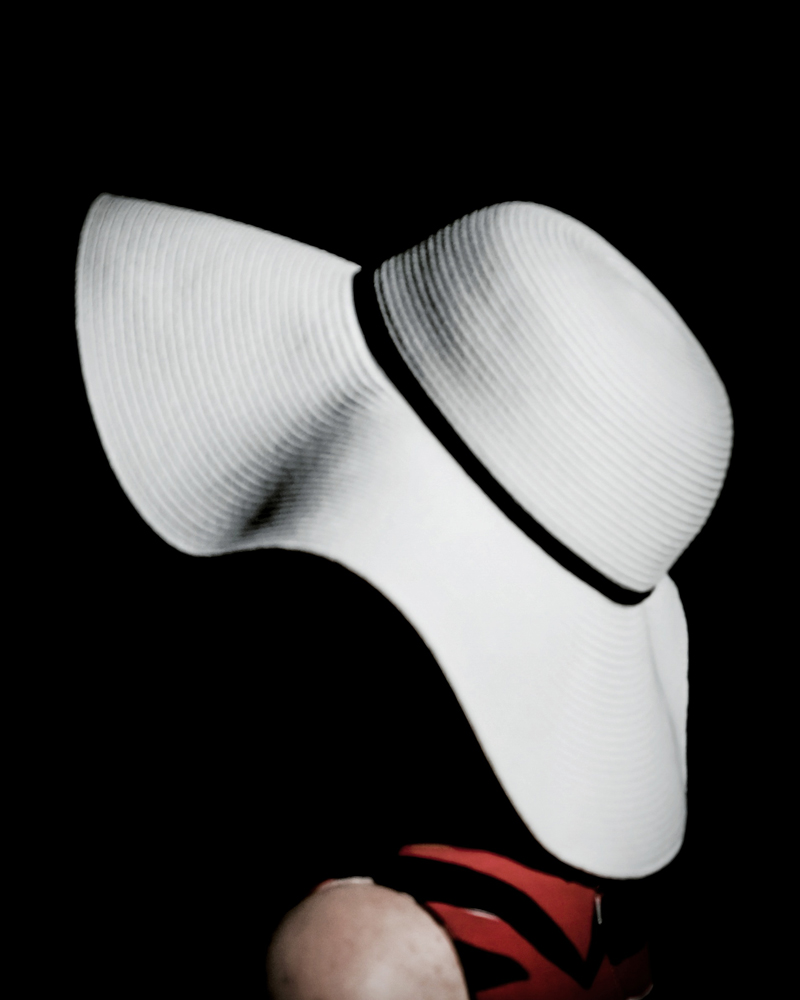
Then I lost the sea and the transition was violent. Entering the next phase of life kept me occupied but I could hardly somehow manage to return back to the early days. I wasn’t nostalgic or pessimistic; I was just longing for some sort of simplicity, a way of life based on spontaneity, on free will and on outspoken truths. Adulthood did not arrive as a blessing but as the fulfillment of a dreary prophecy. All the potential punishments of our childhood became our daily adult routine: “you’ll be left alone” or “you won’t get any money” or even “you are not allowed to go out”.
The legendary summers looked like shipwrecked boats; they couldn’t set sail because they were too damaged, nor could they reach the shore and start all over again clean. I equipped myself with artifacts, some long existing objects, humble in their existence, easy in their use. Technology has altered them but it didn’t taint their soul. They seemed to have been always there, on that remote planet, as a way of expression and their purpose was to create worlds that we’d probably never visit.
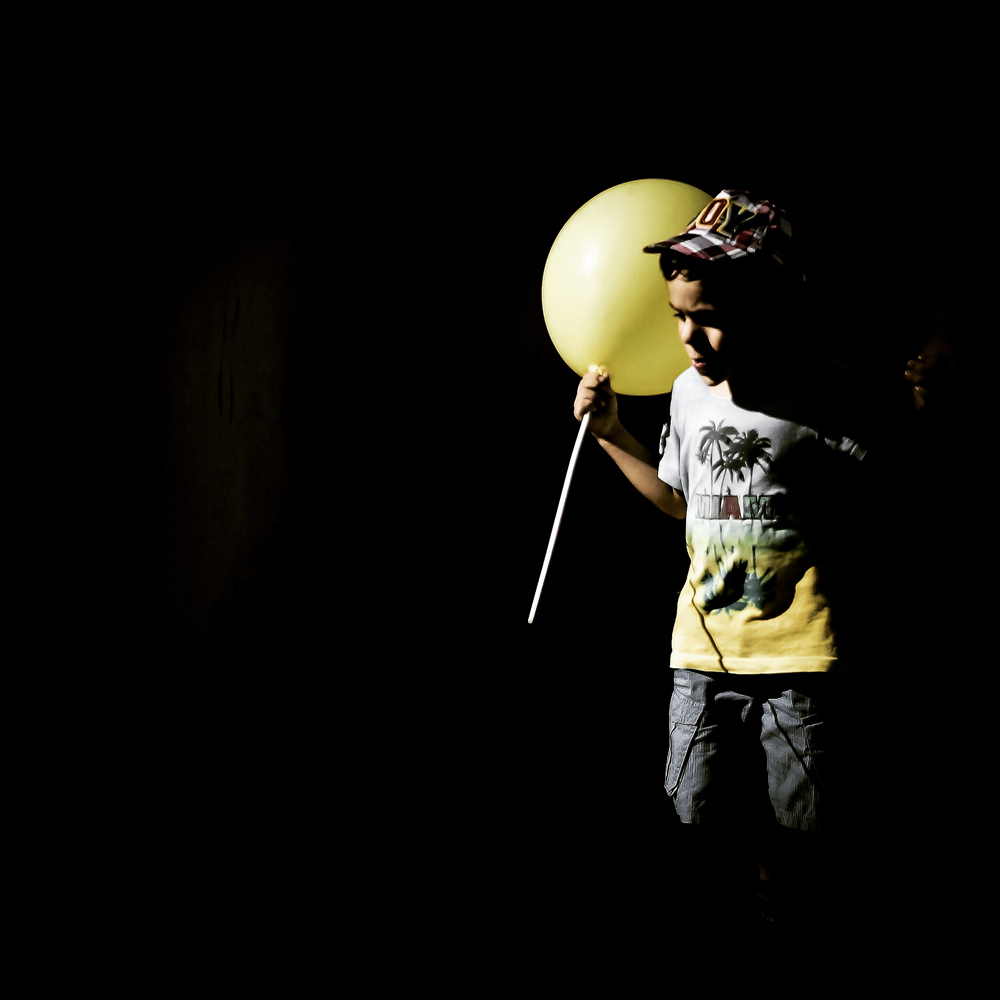
“Yellow Balloon”, Athens 2016

A family of sorts, Vilnius 2016
At first it was a pen and a paper, then a typewriter and later a laptop. Despite its technological evolution, the soul of the written word did not change and there will always be someone willing to lock his body -but not his spirit- into a silent room and start writing. Respectively, at first there was a smartphone, then a compact camera and later a bigger one. Contrary to the ancient belief, images do not consist of a thousand words; they consist of all the words we were not able to write.
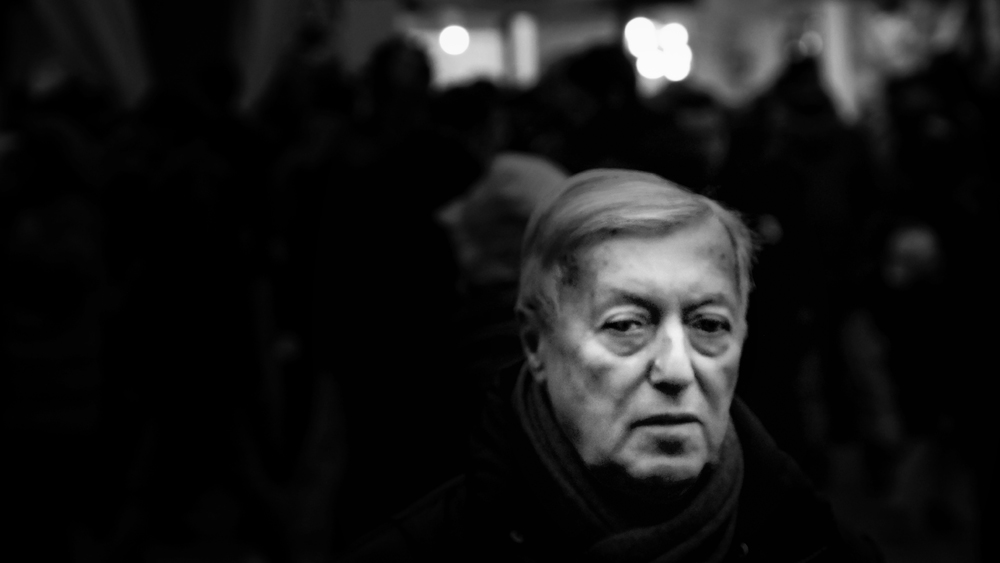
“Wrinkles and movies”, Bologna 2016
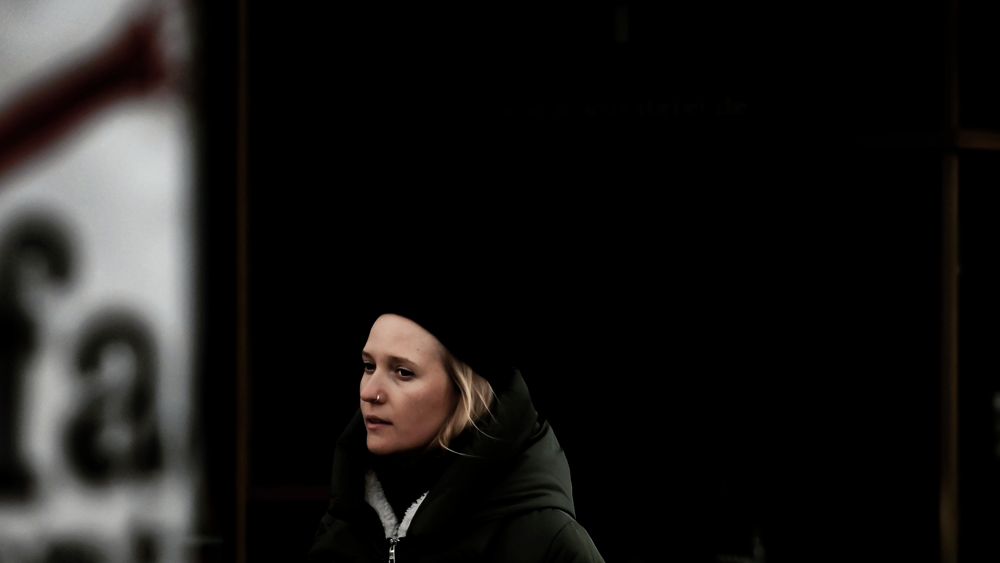
“Far Away”, Berlin 2017
I can never afford to lose people, but when I started dealing with absence it seemed to me that there was only one way back: the narrative. Through writing I felt I could re-visit, through photography I felt I could re-see. The return to childhood has nothing heroic in its heart and I could never identify with Proustian moments. It was simply that old longing for simplicity sending me to the white paper or the black film.
The white paper and the black film are always an interpretation of a narrative that fails to be resonated: words that fail to be written deliver always a white paper, while photos that fail to be taken deliver always a black image. The eternal battle of the two irreconcilable colors is not only a clash between light and darkness but also the inability of self-expression on a given day. If the creative adult is indeed a child who has survived, one can only imagine how painful a white paper or a black film really feels.
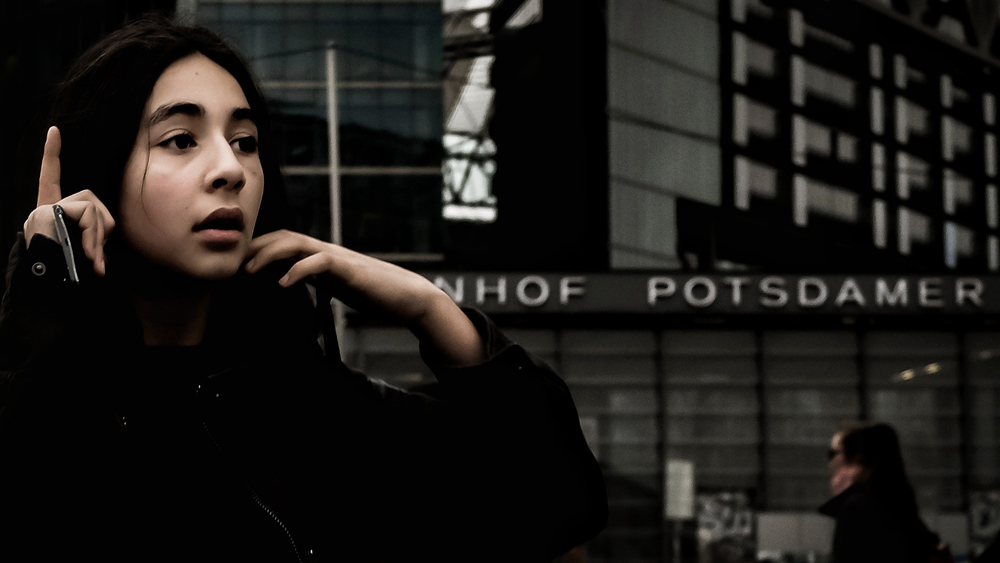
“No man’s land”, Berlin 2017
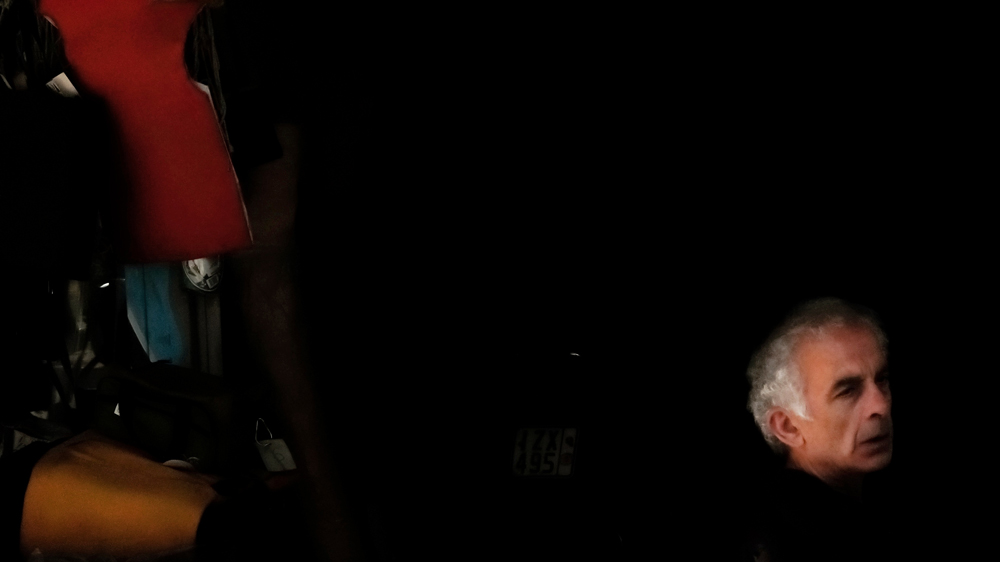
“The Letter”, Athens 2017
I can’t recall most of the faces of these old summers. They seem to be lost in a sea of oblivion and they are only allowed to emerge for an instant every now and then. Nowadays I spend less time in front of the sea and I am not that spontaneous anymore. I’m spending most of my days in big cities, where History adds an extra weight on the already long faces of the Europeans. Sunny days are good for the body, but only the cloudy ones make me feel really productive. I’d wake up rather early and I’d write until noon; then, I’d take my camera in hand and go out.
The city is crowded and I’m searching for dark corners, spots where the contrasts are magnified. I’m standing there for twenty, maybe thirty minutes. I’m waiting for a face to appear from the darkness, somebody that will remind me of the people I used to know: faces from past summers, lost loves, absent friends, people I rarely see. Some days no one appears, but I live for the day that a familiar face will emerge from the darkness. This is a re-connection of sorts, a short return to the simplicity of childhood: a person, an expression, a scene. The memory is finally serving its purpose, which is to remind us who we really are: we are nothing more than a patchwork of all the people we ever met. For a dense moment I feel like being in front of the sea on a warm summer afternoon. I am extremely young again, I am revolted against oblivion and I’m fishing in the abyss.
THE END
George Pavlopoulos is the author of three novels. He has also written several travelogues and short stories. You can see more of his work on his Website as well as on Instagram.
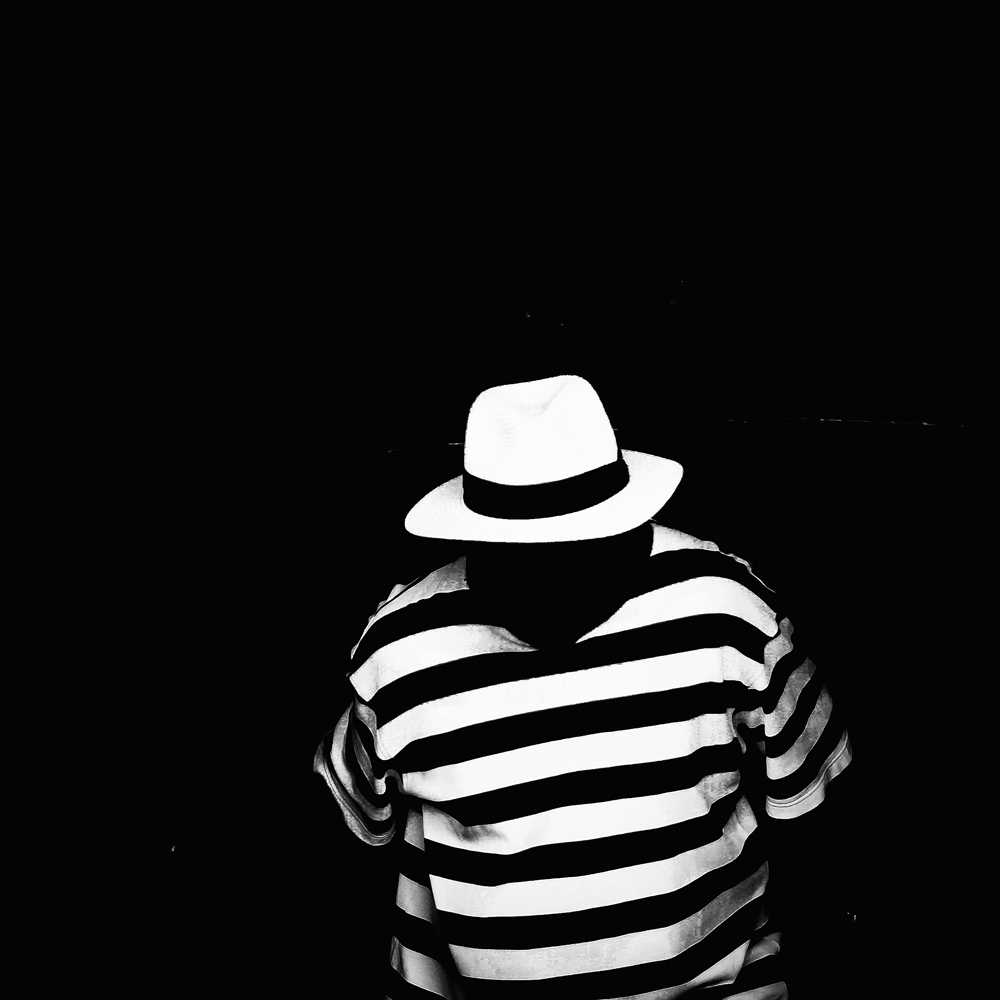
“Only the inventors survive”, Athens 2016

“The journey of sand”, Bologna 2016
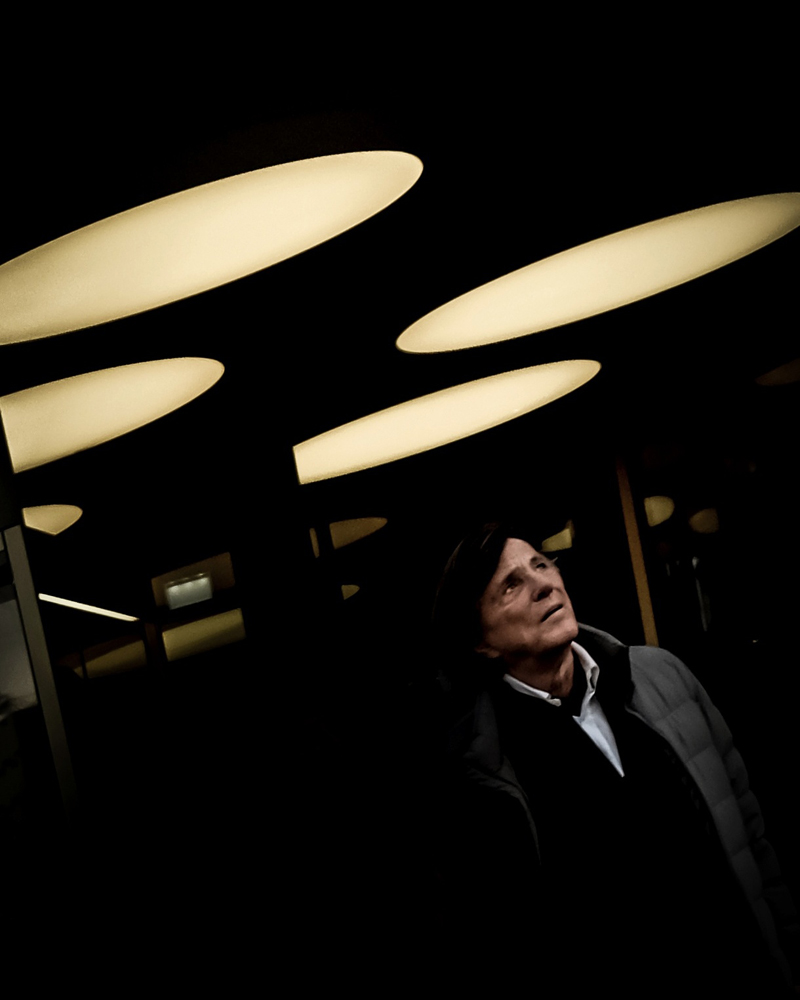
“The man who could not dream”, Berlin 2017
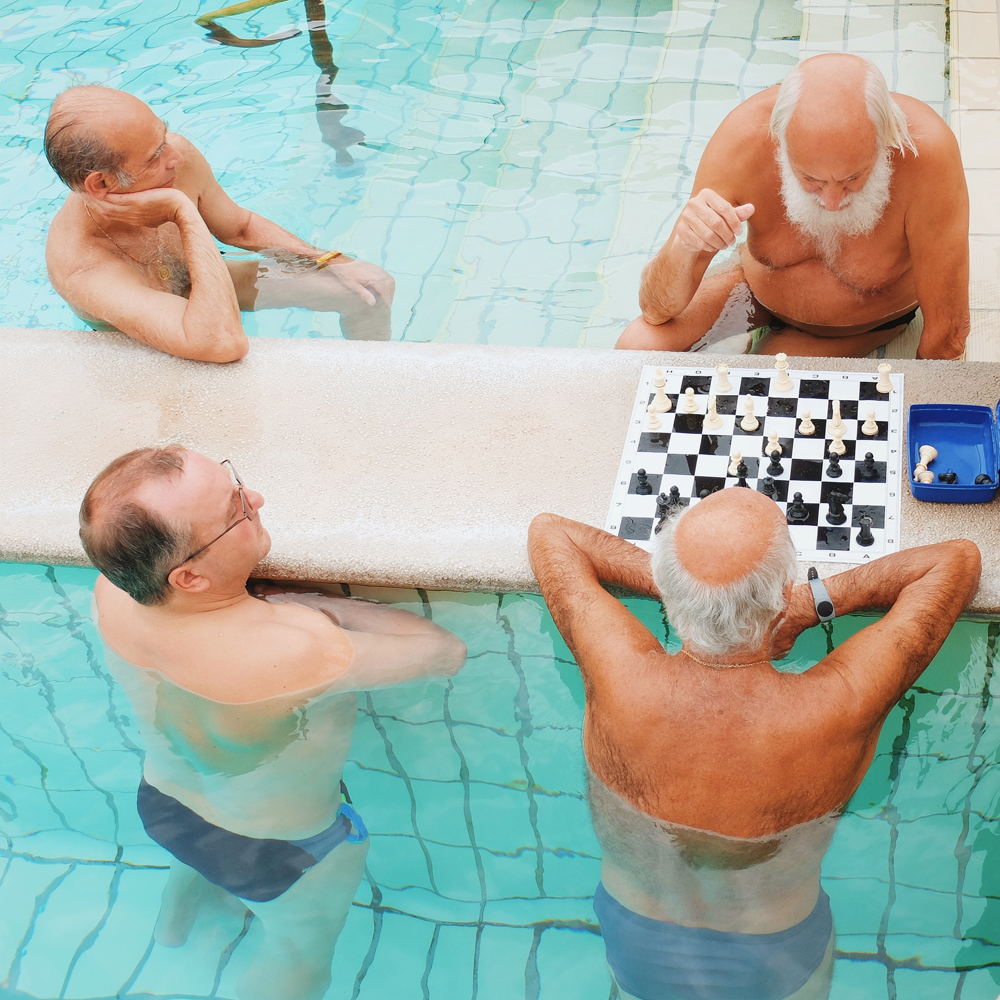
Kings in water, Budapest 2015
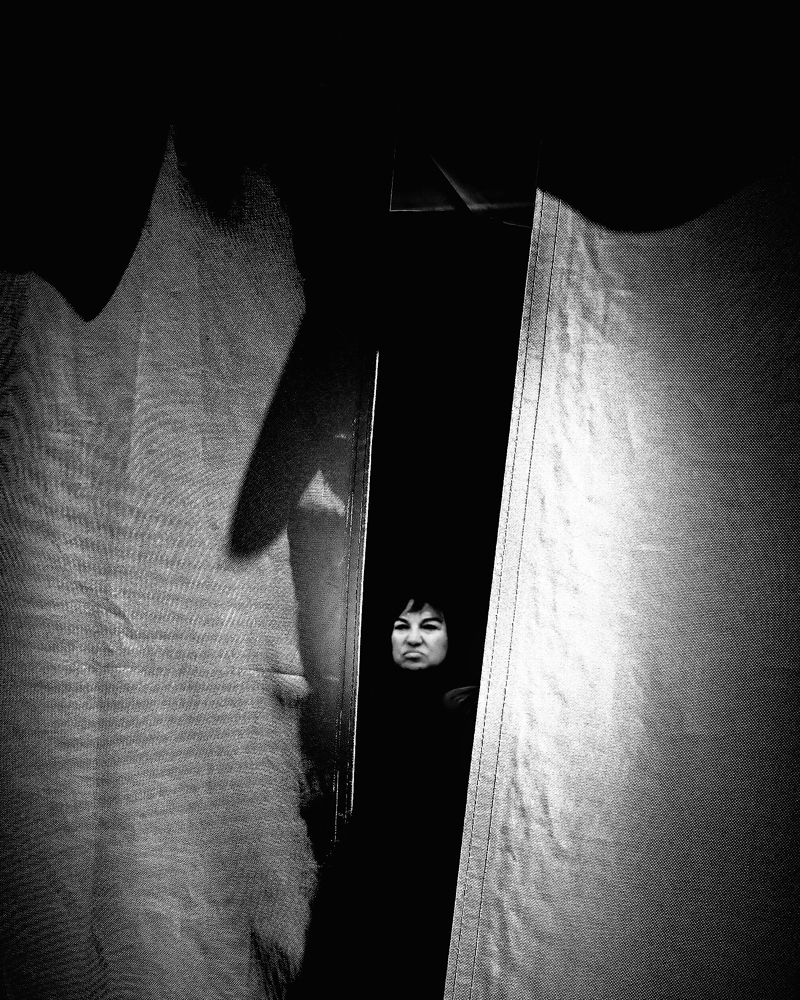
“Ghosts”, Athens 2016
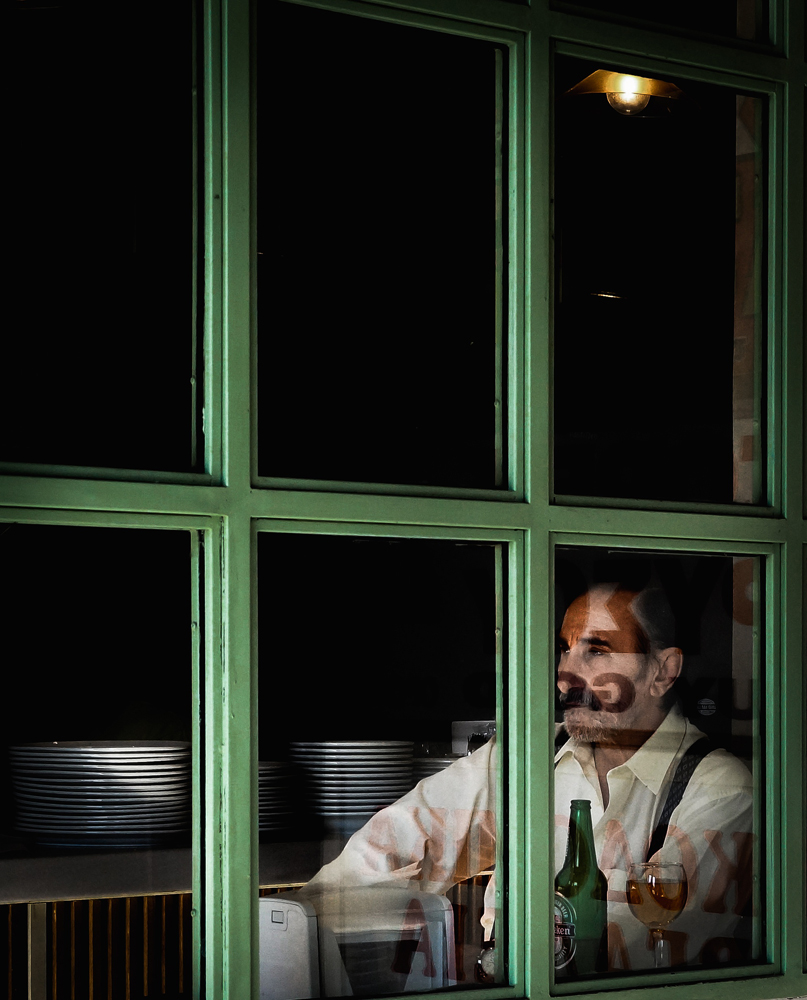
“Early summer”, Athens 2016

“Christmas”, Berlin 2016

Towards the future, Berlin 2017





































